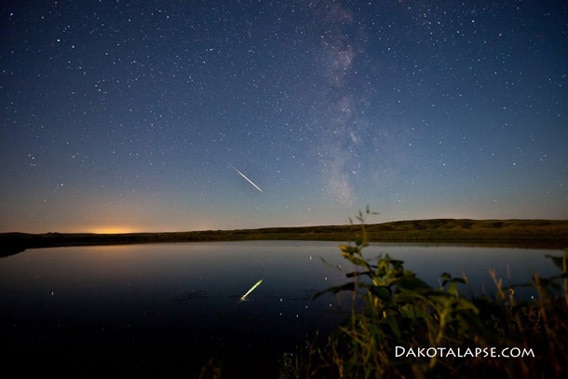Create a free profile to get unlimited access to exclusive videos, sweepstakes, and more!
Geminid Meteor Shower Peaks over the Next Few Days

This week is a great chance to watch a great meteor shower: the Geminids, so named because they appear to shoot away from the constellation of Gemini. This is a really reliable shower, generally putting out as many as 100 meteors per hour! It peaks on the evening to morning of Dec. 13/14, but usually has a decent showing for a couple of days before and after the peak.
First things first: In November, I posted a how-to guide on watching a meteor shower for the Leonids, another nice annual shower. The instructions for the Geminids are essentially the same. Just replace âLeoâ with âGeminiâ in your head when you read the guide, and youâll be fine. Gemini rises in the east around 7:00 p.m. local time, but the best time to observe is after local midnight (see #3 in the how-to guide).
Second things second: What is a meteor shower?
They are usually caused when the Earth passes through a stream of debris blown off a comet. This detritus consists of very small bits of rock, the size of grains of sand or smaller. They plow through our atmosphere, heat up as they violently compress the air, and glow brightly as they burn up. They zip across the sky in a second or twoâwhich is why some people call them shooting starsâand are amazing and lovely.
I said âusuallyâ theyâre from comets, because the Geminids are an exception: The meteors actually come from an asteroid. Called 3200 Phaethon, itâs a weirdo among space rocks. It has a highly-inclined orbit, tipped by 22 degrees from the Earthâs orbit. Its orbit is also very elongated: Phaethon goes away from the Sun farther than Mars does, but it plunges so deeply into the inner solar system that it actually gets half the distance of Mercury to the Sun! Over the course of its year its temperature swings by hundreds of degrees Celsius.
Asteroids are rock and metal and donât usually shed material like comets do. (Comets are mostly ice and rock, so the rock breaks free when the comet nears the Sun and the ice turns into a gas.) But Phaethon is odd, having some characteristics like a comet. It must also have pockets of ice inside it that heat up when it nears the Sun, so it briefly acts like a comet, leaving behind a debris stream that we ram into, forming the Geminids.
So this is your chance to see an asteroid with your own eyes, or at least little pieces of it plunging to their deaths in our air. And even better, EarthSky is reporting that there may be a new meteor shower occurring at the same time. Itâs still unnamed, but could add an additional 30 shooting stars per hour to the event. I hope that added bonus is enough to get you outside. Iâll note the Moon is new this week as well, so its light wonât interfere with fainter meteors. Itâs a win all around!
So go read my guide on meteor watching, grab some warm clothes, some hot chocolate, and a friend, and go watch! There is something almost magically appealing about seeing a meteor suddenly appearing and streaking across the sky, leaving a glowing trail behind it. And if you take pictures, leave a link in the comments below! Itâs even better when you share the fun.


























